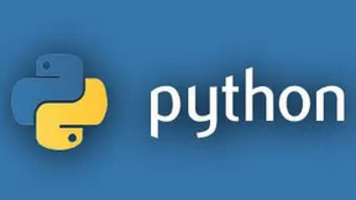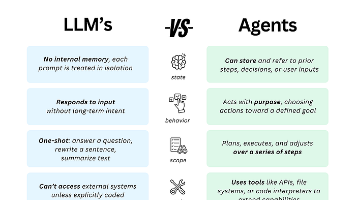标准C++中的类型运算综合分析报告
标准C++类型运算综合报告摘要 本报告系统分析了C++的类型运算机制,包括基础编译期查询和高级元编程工具。第一部分探讨了语言内置操作符:sizeof获取对象大小,alignof查询内存对齐,decltype推导表达式类型,以及typeid的RTTI功能。第二部分研究了标准库的**<type_traits>**框架,详细介绍了其实现机制(模板特化)和三类核心工具:属性查询(如is_int
标准C++中的类型运算综合分析报告
第一部分:基础编译期类型查询
C++类型系统的核心在于其在编译期进行深度静态分析的能力。所有高级元编程技术的基础,是语言内置的一组操作符,它们提供了关于类型和表达式的基础信息。这些操作符并非库特性,而是编译器理解代码的内在组成部分,它们在不产生任何运行时开销的情况下,为开发者揭示了类型的内存布局、对齐要求和静态类型等关键属性。
1.1 确定对象大小:sizeof 操作符
sizeof 是一个编译期一元操作符,用于获取其操作数的对象表示所占用的字节大小。它可以应用于类型标识符(例如 s i z e o f ( i n t ) sizeof(int) sizeof(int))或表达式(例如 s i z e o f ( m y _ v a r i a b l e ) sizeof(my\_variable) sizeof(my_variable))1。其返回值的类型为 s t d : : s i z e _ t std::size\_t std::size_t。sizeof 的一个核心特性是,当它应用于表达式时,该表达式本身并不会被求值。这一特性至关重要,因为它将sizeof 定义为一个纯粹的编译期查询工具,允许开发者在不引发运行时副作用或成本的情况下,对复杂表达式的潜在结果进行大小分析。
这种在“未求值上下文”(unevaluated context)中运作的原则,是C++静态分析能力的基石。编译器拥有一种机制,能够仅基于类型规则来推断表达式的属性,而无需生成并执行其实际代码。这种将属性查询与代码执行相分离的机制,不仅是 sizeof 的一个次要特性,更是所有模板元编程得以实现的根本前提。
sizeof 的计量单位是 char 的大小,标准保证 s i z e o f ( c h a r ) sizeof(char) sizeof(char) 恒为 1。在C++中,“字节”的具体位数由宏CHAR_BIT 定义,尽管在几乎所有现代系统中它都是8位,但标准并未强制要求这一点。
当 sizeof 应用于不同的数据结构时,其行为具有特定的细微差别:
- 数据结构与填充(Padding):当应用于类(class)或结构体(struct)时,sizeof 的结果包含了编译器为满足其成员的对齐要求而插入的任何填充字节。这意味着一个结构体的总大小不一定等于其所有成员大小的总和。
- 数组:当应用于静态大小的数组时,sizeof 返回整个数组占用的总字节数(即元素大小乘以元素数量)。这与将其应用于因数组退化(array decay)而产生的指针形成鲜明对比,后者的结果将仅仅是指针自身的大小。
- 空类:为确保一个类的两个不同对象拥有不同的内存地址,空类的大小被保证为非零,通常是1 。
1.1.1 可变参数模板扩展:sizeof…
随着C++11的引入,sizeof… 作为一个独立的操作符被加入语言。它专门用于查询模板参数包中的元素数量,返回一个编译期整数常量。这个操作符是编写可变参数模板(variadic templates)的基础,使得模板能够接受任意数量的参数。
1.2 理解内存对齐:alignof 操作符
C++11引入的 alignof 是一个编译期操作符,它返回给定类型的对齐要求(以字节为单位)5。其结果是一个 s t d : : s i z e _ t std::size\_t std::size_t 类型的值,表示该类型的对象在内存中为了获得最佳性能或满足特定硬件架构的正确性要求所必须分配到的地址边界。
alignof 关注的是内存地址的边界,而 sizeof 关注的是总的内存消耗。这两者之间的关系在处理复合类型时尤为重要。例如,对于一个数组 T a r r [ N ] T arr[N] Tarr[N], s i z e o f ( a r r ) sizeof(arr) sizeof(arr) 的结果是 N ∗ s i z e o f ( T ) N * sizeof(T) N∗sizeof(T),但 a l i g n o f ( a r r ) alignof(arr) alignof(arr) 的结果仅仅是其元素类型 T T T 的对齐要求,即 a l i g n o f ( T ) alignof(T) alignof(T) 。对于一个结构体,alignof 返回其所有成员中最严格(即最大)的对齐要求。
对齐在底层编程、性能敏感的代码(例如,避免因非对齐访问而导致的CPU性能惩罚)以及与硬件交互的场景中至关重要。它通常与C++11引入的 alignas 说明符结合使用,以强制施加自定义的对齐约束。
1.3 推导表达式类型:decltype 说明符
decltype 作为C++11引入的一个类型说明符,能够在不求值表达式的情况下,产出该表达式的类型。它在泛型编程中扮演着不可或缺的角色,尤其是在处理结果类型依赖于模板参数的场景中。
decltype 的行为根据其参数的形式有显著区别,这一区别是理解其强大功能的关键:
- decltype(entity):如果参数是一个未加括号的标识符表达式(如变量名 x)或成员访问表达式(obj.member),decltype 将产出该实体被声明的类型。例如,对于
const int x = 0;,decltype(x) 的结果是 const int。 - decltype((expression)):如果参数是任何其他形式的表达式,包括一个被括号括起来的标识符(如 (x)),其结果类型将由该表达式的值类别(value category)决定。
- 如果表达式是一个类型为 T T T 的左值(lvalue),decltype 产出 T & T\& T&。由于 (x) 是一个左值表达式,因此对于 const int x,decltype((x)) 的结果是 const int&。
- 如果表达式是一个类型为 T T T 的消亡值(xvalue),decltype 产出 T & & T\&\& T&&。
- 如果表达式是一个类型为 T T T 的纯右值(prvalue),decltype 产出 T T T。
decltype 对于定义泛型函数的返回类型(尤其是在C++14的返回类型自动推导出现之前的尾置返回类型语法中)以及与 s t d : : f o r w a r d std::forward std::forward 结合实现完美转发至关重要。
从 sizeof 到 alignof 和 decltype 的演进,清晰地展示了C++语言在类型内省能力上的发展轨迹。sizeof 是一个源自C语言的、提供基础内存布局信息的操作符。而C++11新增的 alignof 和 decltype 则代表了一次巨大的飞跃,它们分别提供了关于硬件约束(alignof)和复杂表达式的精确类型与值类别(decltype)的更细致信息。这一趋势反映了C++语言为赋予开发者更强大、更精确的泛型编程与编译期逻辑工具而进行的深思熟虑的演化。
1.4 运行时对应物:typeid 操作符
typeid 操作符提供了运行时类型识别(Runtime Type Identification, RTTI)的功能。它返回一个const std::type_info 对象,该对象表示其操作数的类型。这个操作符的独特之处在于它跨越了编译期和运行时的界限:
- 静态(编译期)行为:当 typeid 应用于非多态类型或表达式时,其类型在编译期确定,并且表达式不会被求值。
- 动态(运行时)行为:当 typeid 应用于一个指向多态类(即至少包含一个虚函数的类)的解引用指针或引用时,它会执行一次运行时查找(通常通过虚函数表),以确定该对象的实际派生类型。
在本报告中包含 typeid 的目的,是为了清晰地界定编译期操作的范围。与纯粹在编译期运作的类型萃取(type traits)和 decltype 不同,typeid 可能会引入运行时开销和动态行为,这使其在本质上区别于后续章节将要讨论的元编程优化技术,并且通常不适用于这些场景。
第二部分:<type_traits> 库:编译期内省框架
本部分将从语言内置操作符转向标准库为类型操作提供的综合性工具集。<type_traits> 头文件提供了一套标准化的、可移植的词汇表,用于在编译期查询类型的详细信息,构成了现代C++元编程的支柱。
2.1 核心原则与实现机制
类型萃取(Type traits)允许程序在编译期对类型进行分析。它们能够回答诸如“这个类型是整数吗?”或“这个类型是指针吗?”之类的问题。这些信息随后被用于驱动条件编译、静态断言以及模板优化。
类型萃取的实现机制是模板特化(template specialization)。一个主模板结构体提供一个默认值(例如false),然后为满足该萃取条件的类型提供特化版本,将该值覆写为 true。
大多数类型萃取都继承自 s t d : : i n t e g r a l _ c o n s t a n t < b o o l , V > std::integral\_constant<bool, V> std::integral_constant<bool,V>,这个基础模板提供了一个标准的静态成员 ::value 和一个类型别名 ::type。 s t d : : t r u e _ t y p e std::true\_type std::true_type 和 s t d : : f a l s e _ t y p e std::false\_type std::false_type 分别是 s t d : : i n t e g r a l _ c o n s t a n t < b o o l , t r u e > std::integral\_constant<bool, true> std::integral_constant<bool,true> 和 s t d : : i n t e g r a l _ c o n s t a n t < b o o l , f a l s e > std::integral\_constant<bool, false> std::integral_constant<bool,false> 的别名。
在C++11之前,开发者们常常需要编写临时的、不可移植的模板技巧来查询类型属性。<type_traits> 在C++11中的标准化是一个分水岭。它不仅仅是提供了一些工具,更是为编译期编程创建了一套标准化的词汇表。这种通用语言的建立,促进了更复杂、更可移植的元编程库(如Boost)的发展,并为后续的语言特性,如SFINAE辅助工具( s t d : : e n a b l e _ i f std::enable\_if std::enable_if)和依赖于这套词汇表的Concepts,铺平了道路。因此,<type_traits> 不仅仅是一个库,它更是现代C++泛型编程赖以构建的基础语义层。
2.2 类型萃取的分类
<type_traits> 库中的工具可以根据其功能和参数数量进行逻辑分类:
- 一元类型萃取(类型属性):这类萃取接受单个类型 T T T 作为参数,并提供一个布尔类型的 ::value 成员,用于查询该类型的特定属性。
- 主类别:例如 s t d : : i s _ i n t e g r a l std::is\_integral std::is_integral、 s t d : : i s _ f l o a t i n g _ p o i n t std::is\_floating\_point std::is_floating_point、 s t d : : i s _ a r r a y std::is\_array std::is_array、 s t d : : i s _ c l a s s std::is\_class std::is_class、 s t d : : i s _ p o i n t e r std::is\_pointer std::is_pointer、 s t d : : i s _ r e f e r e n c e std::is\_reference std::is_reference、 s t d : : i s _ v o i d std::is\_void std::is_void。
- 复合类别:由主类别组合而成,例如 s t d : : i s _ a r i t h m e t i c std::is\_arithmetic std::is_arithmetic(当 is_integral 或 is_floating_point 为真时为真)。
- 属性查询:例如 s t d : : i s _ c o n s t std::is\_const std::is_const、 s t d : : i s _ p o d std::is\_pod std::is_pod(Plain Old Data)、 s t d : : i s _ t r i v i a l l y _ c o p y a b l e std::is\_trivially\_copyable std::is_trivially_copyable。这些对于性能优化至关重要。
- 二元类型萃取(类型关系):这类萃取接受两个类型 T T T 和 U U U,并提供一个布尔类型的 ::value 成员,用于描述它们之间的关系。
- 示例: s t d : : i s _ s a m e < T , U > std::is\_same<T, U> std::is_same<T,U>、 s t d : : i s _ b a s e _ o f < B a s e , D e r i v e d > std::is\_base\_of<Base, Derived> std::is_base_of<Base,Derived>、 s t d : : i s _ c o n v e r t i b l e < F r o m , T o > std::is\_convertible<From, To> std::is_convertible<From,To>。
- 转换类型萃取(类型修改):这类萃取接受一个类型 T T T,并通过一个名为 ::type 的成员类型别名提供一个经过修改的新类型。它们不回答问题,而是执行一次编译期类型转换。
- 示例: s t d : : r e m o v e _ r e f e r e n c e < T > : : t y p e std::remove\_reference<T>::type std::remove_reference<T>::type、 s t d : : a d d _ c o n s t < T > : : t y p e std::add\_const<T>::type std::add_const<T>::type、 s t d : : r e m o v e _ p o i n t e r < T > : : t y p e std::remove\_pointer<T>::type std::remove_pointer<T>::type、 s t d : : m a k e _ u n s i g n e d < T > : : t y p e std::make\_unsigned<T>::type std::make_unsigned<T>::type。
在类型萃取中,一个特别重要的子集是那些以“Trivially”开头的萃取,如 s t d : : i s _ t r i v i a l l y _ c o p y a b l e std::is\_trivially\_copyable std::is_trivially_copyable。这些萃取为C++代码提供了一种标准化的、安全的方式来判断一个类型是否具有类似C语言的内存布局。这一信息允许泛型算法从调用可能复杂的C++拷贝构造函数,转而使用高度优化的底层内存操作(如memcpy)。这是一个关键的“性能逃生舱口”,它使得C++能够在保持其高级抽象(如带有构造函数的类)的同时,在可能的情况下达到C语言级别的性能。这个特性是连接C++的安全性与C的原始速度之间的重要桥梁。
表1:标准类型萃取分类
| 类别 | 萃取 (含 _v/_t 辅助模板) | 描述 | 应用场景示例 |
|---|---|---|---|
| 一元 (Unary) | s t d : : i s _ i n t e g r a l _ v < T > std::is\_integral\_v<T> std::is_integral_v<T> | 检查 T T T 是否为整型 (int, char, bool等)。 | 约束一个函数只接受整型参数。 |
| s t d : : i s _ f l o a t i n g _ p o i n t _ v < T > std::is\_floating\_point\_v<T> std::is_floating_point_v<T> | 检查 T T T 是否为浮点型。 | 为浮点数和整数提供不同的算法实现。 | |
| s t d : : i s _ p o i n t e r _ v < T > std::is\_pointer\_v<T> std::is_pointer_v<T> | 检查 T T T 是否为指针类型。 | 特化处理指针和非指针类型。 | |
| s t d : : i s _ c l a s s _ v < T > std::is\_class\_v<T> std::is_class_v<T> | 检查 T T T 是否为类或结构体类型。 | 启用只对类类型有效的成员函数。 | |
| s t d : : i s _ t r i v i a l l y _ c o p y a b l e _ v < T > std::is\_trivially\_copyable\_v<T> std::is_trivially_copyable_v<T> | 检查 T T T 是否为可平凡复制的。 | 在泛型拷贝函数中选择 memcpy 优化路径。 | |
| 二元 (Binary) | s t d : : i s _ s a m e _ v < T , U > std::is\_same\_v<T, U> std::is_same_v<T,U> | 检查 T T T 和 U U U 是否为同一类型。 | 在模板特化中选择精确匹配的类型。 |
| s t d : : i s _ b a s e _ o f _ v < B , D > std::is\_base\_of\_v<B, D> std::is_base_of_v<B,D> | 检查 B B B 是否为 D D D 的基类。 | 约束模板参数必须继承自某个基类。 | |
| s t d : : i s _ c o n v e r t i b l e _ v < F , T > std::is\_convertible\_v<F, T> std::is_convertible_v<F,T> | 检查类型 F F F 是否能被转换为类型 T T T。 | 防止不安全的隐式类型转换。 | |
| 转换 (Transformation) | s t d : : r e m o v e _ r e f e r e n c e _ t < T > std::remove\_reference\_t<T> std::remove_reference_t<T> | 移除类型的引用限定符。 | 在完美转发中获取值的原始类型。 |
| s t d : : a d d _ c o n s t _ t < T > std::add\_const\_t<T> std::add_const_t<T> | 为类型添加 const 限定符。 | 创建一个类型的常量版本。 | |
| s t d : : r e m o v e _ c v _ t < T > std::remove\_cv\_t<T> std::remove_cv_t<T> | 移除类型的 const 和 volatile 限定符。 | 比较类型时忽略CV限定符。 | |
| s t d : : d e c a y _ t < T > std::decay\_t<T> std::decay_t<T> | 对类型应用数组到指针、函数到指针和移除CV及引用的转换。 | 规范化按值传递的函数参数类型。 |
2.3 语法演进与现代惯用法
- 经典语法 (::value, ::type):在C++14/17之前,访问类型萃取的结果需要显式地访问 ::value 成员以获取布尔值,或 ::type 成员以获取转换后的类型。这种语法可能相当冗长,尤其是在模板上下文中,还需要使用 typename 关键字来处理依赖类型。
- 现代辅助模板 (_v, _t):
- C++14为转换类型萃取引入了以 _t 结尾的别名模板。例如, s t d : : r e m o v e _ c o n s t _ t < T > std::remove\_const\_t<T> std::remove_const_t<T> 是 typename std::remove_const<T>::type 的一个更简洁的别名。
- C++17为值萃取引入了以 _v 结尾的变量模板。例如, s t d : : i s _ i n t e g r a l _ v < T > std::is\_integral\_v<T> std::is_integral_v<T> 是 s t d : : i s _ i n t e g r a l < T > : : v a l u e std::is\_integral<T>::value std::is_integral<T>::value 的一个更简洁的别名。
这些辅助模板极大地提升了代码的可读性,减少了样板代码,使得模板元编程的语法负担大为减轻。
第三部分:应用类型萃取:约束模板
本部分探讨类型萃取在泛型编程中的一个关键应用:约束模板。我们将首先详细介绍C++20之前的经典机制——SFINAE,然后展示其在一个强大的优化模式中的应用。
3.1 SFINAE原则:“替换失败并非错误”
SFINAE(Substitution Failure Is Not An Error)是一条C++语言规则,它规定当编译器尝试替换模板参数并导致一个无效的代码构造时,这本身不构成一个硬性的编译错误。相反,该特定的模板将简单地从重载决议的候选函数集合中被移除。
SFINAE并非为元编程而特意设计,而是作为模板替换规则的一个结果“意外”出现的特性,后来被开发者们发现并用作成一个强大的、尽管复杂的工具。其工作原理是,替换失败必须发生在模板声明的“直接上下文”(immediate context)中,如返回类型、参数类型等。发生在函数体内部深处的失败仍然是硬错误。例如,当 T T T 是 int 时,尝试使用 typename T::foo 会导致替换失败;编译器会丢弃这个重载候选项,并继续寻找其他可行的匹配项。
虽然SFINAE通常被视为一种启用或禁用重载的方式,但它与类型萃取和模板递归相结合,实际上构成了一个图灵完备的编译期逻辑系统。这个“意外”的特性使得库开发者能够在 constexpr 函数普及之前,执行复杂的编译期计算、断言和类型操作。这揭示了C++模板系统早期就已潜藏的巨大(尽管常常难以驾驭的)威力。
3.2 SFINAE的实践:std::enable_if
s t d : : e n a b l e _ i f std::enable\_if std::enable_if 是标准库中利用SFINAE原则的主要辅助工具。它是一个条件类型别名:
- s t d : : e n a b l e _ i f < t r u e , T > : : t y p e std::enable\_if<true, T>::type std::enable_if<true,T>::type 解析为类型 T T T。
- s t d : : e n a b l e _ i f < f a l s e , T > : : t y p e std::enable\_if<false, T>::type std::enable_if<false,T>::type 会导致替换失败(因为 false 的特化版本中没有 ::type 成员)。
常见的应用模式包括:
- 作为返回类型:template <typename T> std::enable_if_t<std::is_integral_v<T>, void> func(T); 这个函数仅对整型存在。
- 作为函数参数:template <typename T> void func(T, std::enable_if_t<std::is_integral_v<T>>* = nullptr);
- 作为模板参数:template <typename T, typename = std::enable_if_t<std::is_integral_v<T>>> void func(T); 38
然而,SFINAE代码以其冗长、难以阅读而著称,并且在约束未满足时会产生极其晦涩、长篇的编译器错误信息。此外,它缺乏一种机制来判断哪个重载是“更特化的”,这常常导致歧义错误。
3.3 高级应用:使用 if constexpr 进行编译期优化
C++17引入的 if constexpr 允许进行编译期分支。其条件必须是一个常量表达式。未被选择的分支在编译时被丢弃,不会被实例化,从而避免了该分支中可能出现的编译错误。对于许多优化场景,这是一种比标签分发(tag dispatching)或SFINAE更清晰的替代方案。
if constexpr 通常被看作是SFINAE技术的替代品,但它们之间也存在高度的互补关系。SFINAE作用于重载决议层面,决定实例化哪个函数模板。而 if constexpr 则作用于一个已被实例化的函数模板内部,决定编译哪条代码路径。这种从操控重载集合到函数内条件编译的转变,体现了元编程风格的演进。
3.3.1 案例研究:一个泛型的 safe_copy 函数
目标:创建一个泛型函数 safe_copy(InputIt first, InputIt last, OutputIt d_first),用于拷贝一个元素区间。
优化:如果迭代器的值类型是可平凡复制的(trivially copyable),并且迭代器本身是原生指针,那么就可以使用高度优化的 s t d : : m e m c p y std::memcpy std::memcpy。否则,必须回退到安全的、逐元素的拷贝循环。
实现:
#include <iterator>
#include <type_traits>
#include <cstring> // For std::memcpy
#include <iostream>
template <typename InputIt, typename OutputIt>
void safe_copy(InputIt first, InputIt last, OutputIt d_first) {
// 获取迭代器指向的底层值类型
using value_type = typename std::iterator_traits<InputIt>::value_type;
if constexpr (std::is_pointer_v<InputIt> &&
std::is_pointer_v<OutputIt> &&
std::is_trivially_copyable_v<value_type>)
{
// 快速路径:类型简单,使用 memcpy
std::cout << "Using fast path (memcpy)\n";
const auto count = std::distance(first, last);
if (count > 0) {
std::memcpy(d_first, first, count * sizeof(value_type));
}
} else {
// 安全路径:使用逐元素拷贝
std::cout << "Using safe path (element-wise copy)\n";
for (auto it = first; it!= last; ++it, ++d_first) {
*d_first = *it;
}
}
}
分析:这个例子完美地展示了类型萃取与 if constexpr 的协同作用。 s t d : : i s _ t r i v i a l l y _ c o p y a b l e _ v std::is\_trivially\_copyable\_v std::is_trivially_copyable_v 27 提供了关键的决策信息。
if constexpr 41 充当了编译期的开关。如果条件为真,else 块将被完全丢弃,从而防止了因尝试 memcpy 一个像 s t d : : s t r i n g std::string std::string 这样的非平凡复制类型而可能引发的错误。这种模式是性能导向的泛型库设计的基石。
第四部分:现代范式:C++20 Concepts
本部分分析C++泛型编程中最重大的演进:将Concepts(概念)作为头等语言特性引入。它直接解决了SFINAE的缺点,代表了模板约束表达与强制方式的范式转变。
4.1 Concepts的原理与语法
原理:Concepts的设计初衷是为了直接解决SFINAE的主要缺陷:可读性差、编译器诊断信息糟糕以及表达约束的复杂性。它们将约束从一种实现细节(模板“技巧”)提升为模板接口的核心部分。
语法:
- concept 关键字用于定义一组具名的需求。一个concept是作用于模板参数的编译期布尔谓词。
template<typename T>
concept Integral = std::is_integral_v<T>;
- requires 关键字有两种用法:
- requires 子句:用于约束一个模板,例如 template<Integral T> void func(T); 或 template<typename T> requires Integral<T> void func(T);。
- requires 表达式:用于在concept定义内部检查表达式的有效性,允许进行语法检查,如成员函数是否存在或操作符是否有效:requires(T a, T b) { a + b; }。
SFINAE允许程序员检查语法的有效性(例如,“T::type 是否存在?”)。而Concepts则鼓励开发者转向指定语义上的需求(例如,“T 是否是一个 Regular 类型?”)。requires 表达式的语法虽然看起来仍然是句法层面的,但Concepts的意图和命名约定推动开发者将这些句法检查组合成有意义的语义类别。这是泛型库设计方式的一次深刻转变,从依赖实现技巧转向为模板参数设计正式的、文档化的接口。
4.2 对比分析:Concepts 与 SFINAE
表2:SFINAE 与 Concepts 对比矩阵
| 属性 | SFINAE (使用 std::enable_if) | C++20 Concepts |
|---|---|---|
| 语法 | 冗长且非直观,通常作为返回类型、模板参数或函数参数的一部分。 | 简洁明了,使用 concept 和 requires 关键字直接表达约束。 |
| 可读性与意图 | 意图被复杂的模板语法所掩盖,可读性差。 | 约束成为接口的一部分,代码自文档化,意图清晰。 |
| 编译器错误质量 | 产生晦涩难懂、长篇的模板替换错误信息。 | 提供清晰、有针对性的错误信息,明确指出哪个约束未被满足。 |
| 重载决议机制 | 无法排序,两个同时满足的重载会导致歧义错误。 | 支持约束的偏序(subsumption),编译器会自动选择最受约束的重载。 |
| 编译期性能 | 可能较慢,天真的实现会实例化整个布尔表达式;依赖于通用的模板实例化引擎。 | 通常更快,约束检查可在首次失败时短路;约束检查机制本身经过优化。 |
| 语言集成 | 一种基于语言规则的“技巧”或“意外”特性。 | 头等语言特性,与类型系统深度集成。 |
4.3 Concepts与类型萃取的协同作用
Concepts和类型萃取并非相互排斥,而是互补的工具。定义一个concept最常见的方式就是使用一个或多个来自<type_traits> 的萃取。标准库本身就提供了像 s t d : : i n t e g r a l std::integral std::integral 和 s t d : : f l o a t i n g _ p o i n t std::floating\_point std::floating_point 这样的concept,它们就是用相应的类型萃取来定义的。
- 何时使用Concept:用于定义模板的公共接口需求。Concepts描述的是语义(例如 Sortable、Numeric)。
- 何时使用类型萃取:在 requires 表达式内部或函数实现中(如 if constexpr)用于检查类型的某个特定的、底层的属性(例如 is_trivially_copyable)。类型萃取更关注实现细节和句法检查。此外,当需要模板偏特化时,只能使用萃取,因为Concepts不支持偏特化。
有效的泛型编程需要三个要素:1) 一种编写类型无关代码的方式(模板),2) 一种查询给定类型属性的方式(<type_traits>),以及 3) 一种强制约束可用类型的方式(Concepts)。在C++20之前,这“三脚架”的第三条腿(SFINAE)既脆弱又不稳定。Concepts作为头等语言特性的引入,最终补全了这一三元组合,使得C++中的泛型编程在根本上变得更加健壮、易于使用和强大。C++20中 Ranges 库的爆发式发展就是最直接的证明,因为它完全构建在Concepts的基础之上。
结论:C++元编程的演进轨迹
本报告系统地梳理了标准C++中类型运算的演进历程,揭示了一条从底层操作符到高级语言约束的清晰发展路径。
这一旅程始于C语言遗留的、提供基础内存信息的 sizeof 操作符。随后,C++11通过 <type_traits> 库的标准化,为社区创建了一套通用的编译期词汇表,将元编程从一系列零散的技巧提升为一门有章可循的学科。基于这套词汇表,SFINAE作为一种强大但晦涩的模板约束技术被广泛应用,它展示了C++模板系统蕴含的巨大潜力,但也因其复杂性和糟糕的诊断信息而备受诟病。
最终,C++20 Concepts的出现标志着一个新时代的到来。它将约束从一种“意外”的、基于实现技巧的机制,转变为一种明确的、头等的语言特性。Concepts通过其清晰的语法、强大的重载决议能力和革命性的编译器诊断,极大地降低了泛型编程的门槛,提升了代码的安全性和可维护性。
从 sizeof 到 <type_traits>,再到SFINAE,最终到Concepts,这条演进轨迹深刻地体现了C++的一个核心设计哲学:将社区中涌现出的强大编程模式,通过深思熟虑的设计,逐步形式化为更安全、更易用、更健壮的语言特性。这不仅是对历史问题的修正,更是对未来大规模、高可靠性软件工程的投资,确保C++在系统编程和高性能计算领域持续保持其领导地位。
引用的著作
- sizeof operator - cppreference.com - C++ Reference, 访问时间为 九月 22, 2025, https://en.cppreference.com/w/cpp/language/sizeof.html
- What does sizeof do? - c++ - Stack Overflow, 访问时间为 九月 22, 2025, https://stackoverflow.com/questions/3203162/what-does-sizeof-do
- sizeof operator - cppreference.com - TUKE, 访问时间为 九月 22, 2025, https://kurzy.kpi.fei.tuke.sk/c-reference/en/c/language/sizeof.html
- sizeof operator - cppreference.com, 访问时间为 九月 22, 2025, http://en.cppreference.com/w/c/language/sizeof.html
- Alignof operator in C++ - Tutorials Point, 访问时间为 九月 22, 2025, https://www.tutorialspoint.com/alignof-operator-in-cplusplus
- sizeof… operator (since C++11) - cppreference.com - C++ Reference, 访问时间为 九月 22, 2025, https://en.cppreference.com/w/cpp/language/sizeof…html
- What Is The alignof Expression In Modern C++?, 访问时间为 九月 22, 2025, https://learncplusplus.org/what-is-the-alignof-expression-in-modern-c/
- alignof operator (since C++11) - cppreference.com, 访问时间为 九月 22, 2025, https://en.cppreference.com/w/cpp/language/alignof.html
- Re: [std-proposals] operator alignof, 访问时间为 九月 22, 2025, https://lists.isocpp.org/std-proposals/2022/05/3903.php
- alignas specifier (since C++11) - cppreference.com - C++ Reference, 访问时间为 九月 22, 2025, http://en.cppreference.com/w/cpp/language/alignas.html
- The decltype(expression) type specifier (C++11) - IBM, 访问时间为 九月 22, 2025, https://www.ibm.com/docs/en/zos/2.4.0?topic=specifiers-decltypeexpression-type-specifier-c11
- decltype specifier (since C++11) - cppreference.com, 访问时间为 九月 22, 2025, https://en.cppreference.com/w/cpp/language/decltype.html
- What is decltype and how is it used? - Stack Overflow, 访问时间为 九月 22, 2025, https://stackoverflow.com/questions/18815221/what-is-decltype-and-how-is-it-used
- decltype specifier - cppreference.com, 访问时间为 九月 22, 2025, http://naipc.uchicago.edu/2014/ref/cppreference/en/cpp/language/decltype.html
- decltype specifier - cppreference.com, 访问时间为 九月 22, 2025, https://www.cs.helsinki.fi/group/boi2016/doc/cppreference/reference/en.cppreference.com/w/cpp/language/decltype.html
- The typeid operator (C++ only) - IBM, 访问时间为 九月 22, 2025, https://www.ibm.com/docs/en/zos/2.4.0?topic=expressions-typeid-operator-c-only
- typeid operator - cppreference.com, 访问时间为 九月 22, 2025, https://en.cppreference.com/w/cpp/language/typeid.html
- How C++ typeid operator works - Lu’s blog, 访问时间为 九月 22, 2025, https://blog.the-pans.com/how-c-typeid-operator-works/
- Type Traits in C++: Compile-Time Type Analysis | A Practical Guide - StudyPlan.dev, 访问时间为 九月 22, 2025, https://www.studyplan.dev/pro-cpp/type-traits
- A quick primer on type traits in modern C++ - Internal Pointers, 访问时间为 九月 22, 2025, https://www.internalpointers.com/post/quick-primer-type-traits-modern-cpp
- C++ Tutorial: Traits - A Template Specialization - 2020 - BogoToBogo, 访问时间为 九月 22, 2025, https://www.bogotobogo.com/cplusplus/template_specialization_traits.php
- The Type-Traits Library: Type Checks – MC++ BLOG - Modernes C++, 访问时间为 九月 22, 2025, https://www.modernescpp.com/index.php/the-type-traits-library-type-checks/
- A simple introduction to type traits | Ruminations - Aaron Ballman, 访问时间为 九月 22, 2025, https://blog.aaronballman.com/2011/11/a-simple-introduction-to-type-traits/
- libstdc++: type_traits Source File - GNU.org, 访问时间为 九月 22, 2025, https://gcc.gnu.org/onlinedocs/libstdc++/libstdc+±api-4.5/a01067_source.html
- type_traits - C++, 访问时间为 九月 22, 2025, https://cplusplus.com/reference/type_traits/
- std::is_trivially_copyable - cppreference.com - C++ Reference, 访问时间为 九月 22, 2025, http://en.cppreference.com/w/cpp/types/is_trivially_copyable.html
- C++ Type traits - Boost, 访问时间为 九月 22, 2025, https://www.boost.org/doc/libs/1_31_0/libs/type_traits/c++_type_traits.htm
- std::is_trivially_copyable - C++, 访问时间为 九月 22, 2025, https://cplusplus.com/reference/type_traits/is_trivially_copyable/
- std::is_trivially_copyable template in C++ with Examples - GeeksforGeeks, 访问时间为 九月 22, 2025, https://www.geeksforgeeks.org/cpp/stdis_trivially_copyable-template-in-c-with-examples/
- c++ - What is the purpose of _t aliases and _v variable templates for …, 访问时间为 九月 22, 2025, https://stackoverflow.com/questions/77083721/what-is-the-purpose-of-t-aliases-and-v-variable-templates-for-type-traits
- How To Use Alias Templates For Traits In C++ 17 and Beyond | Dimensional Data, 访问时间为 九月 22, 2025, https://d-data.ro/how-to-use-alias-templates-for-traits-in-c-17-and-beyond/
- Substitution failure is not an error - Wikipedia, 访问时间为 九月 22, 2025, https://en.wikipedia.org/wiki/Substitution_failure_is_not_an_error
- Notes on C++ SFINAE, Modern C++ and C++20 … - C++ Stories, 访问时间为 九月 22, 2025, https://www.cppstories.com/2016/02/notes-on-c-sfinae/
- Concepts versus SFINAE-based constraints - Marius Bancila’s Blog, 访问时间为 九月 22, 2025, https://mariusbancila.ro/blog/2019/10/04/concepts-versus-sfinae-based-constraints/
- Tutorial: Let’s get comfortable with SFINAE - Dimitris Platis, 访问时间为 九月 22, 2025, https://platis.solutions/blog/2024/01/27/lets-get-comfortable-with-sfinae/
- Substitution Failure Is Not An Error Principle - Codefinity, 访问时间为 九月 22, 2025, https://codefinity.com/blog/Substitution-Failure-Is-Not-An-Error-Principle
- SFINAE vs Concepts | Using Concepts with Classes - StudyPlan.dev, 访问时间为 九月 22, 2025, https://www.studyplan.dev/pro-cpp/concepts-with-classes/q/sfinae-vs-concepts
- c++ - Is concept a variant of SFINAE - Stack Overflow, 访问时间为 九月 22, 2025, https://stackoverflow.com/questions/74514843/is-concept-a-variant-of-sfinae
- if constexpr requires requires { requires } - think-cell, 访问时间为 九月 22, 2025, https://www.think-cell.com/en/career/devblog/if-constexpr-requires-requires-requires
- constexpr specifier (since C++11) - cppreference.com - C++ Reference, 访问时间为 九月 22, 2025, https://en.cppreference.com/w/cpp/language/constexpr.html
- Requirements for “trivially copyable” too strong? - Google Groups, 访问时间为 九月 22, 2025, https://groups.google.com/a/isocpp.org/g/std-discussion/c/wphImiqfX7Y/m/0XS64oqZKswJ
- Is calling memcpy when the type is trivially copyable a good … - Reddit, 访问时间为 九月 22, 2025, https://www.reddit.com/r/cpp_questions/comments/pq0nfp/is_calling_memcpy_when_the_type_is_trivially/
- C++20 Concepts - a Quick Introduction - C++ Stories, 访问时间为 九月 22, 2025, https://www.cppstories.com/2021/concepts-intro/
- Concepts (C++) - Wikipedia, 访问时间为 九月 22, 2025, https://en.wikipedia.org/wiki/Concepts_(C%2B%2B)
- Constraints and concepts (since C++20) - cppreference.com, 访问时间为 九月 22, 2025, https://en.cppreference.com/w/cpp/language/constraints.html
- Do C++20 concepts change compile-time, positively or not? : r/cpp - Reddit, 访问时间为 九月 22, 2025, https://www.reddit.com/r/cpp/comments/uqqe27/do_c20_concepts_change_compiletime_positively_or/
- C++ concepts and type traits are not enemies. | by Alexander Pochanin - Medium, 访问时间为 九月 22, 2025, https://medium.com/@amiable_tawny_elk_896/c-concepts-and-type-traits-are-not-enemies-6f8065bf669a
- Features of C++ 20 - GeeksforGeeks, 访问时间为 九月 22, 2025, https://www.geeksforgeeks.org/cpp/features-of-c-20/
更多推荐
 已为社区贡献15条内容
已为社区贡献15条内容









所有评论(0)